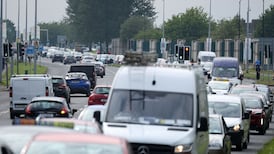There are few natural disasters, if any, that do not merit a verse or even a chapter in the Bible. The seven plagues of Egypt, for example, run the whole gamut of human misery, neatly packaged in one portfolio; they range from the polluted waters of the River Nile, through several lethal plagues of nasty insects and a devastating hailstorm, to a disease afflicting cattle that looks akin to foot-and-mouth.
And then there is Noah's Flood, the collapsing walls of Jericho, and the mysterious fire and brimstone episode that destroyed the twin towns of Sodom and Gomorrah.
But the more benign natural processes are there as well. Unfortunately, many are cleverly disguised as miracles and, as in the case of the theological and moral principles the Holy Book contains, it takes skilled analysis by a suitably inspired interpreter before an ex-cathedra pronouncement can be made identifying any given phenomenon for what it really is. The events commemorated today, the Feast of the Transfiguration, are a case in point.
The bare facts are outlined in Matthew, Chapter 12: "After six days Jesus took Peter and James, and John his brother, and led them on to a high mountain. And he was transfigured before them, and his face shone as the sun, and his garments became white as the light."
From this it is clear that the Transfiguration occurred at a time when the mountain was thickly enveloped in mist. If, in these circumstances, a gap developed in the fog to let the sunlight in, Jesus, dressed in white, would be brilliantly illuminated by the sudden burst of sunlight, and the event would have been all the more spectacular in contrast to the misty gloom beforehand.
But then: "Behold there appeared to them Moses and Elias, conversing with him." Here the explanation lies in the Brocken spectre, an eerie phenomenon sometimes seen on foggy mountain tops, being the shadow of the observer cast by a low sun on to a bank of cloud or mist. It has a strange triangular shape, resulting from the same perspective effect which causes railway lines to seem to converge in the distance; moreover, the shadow, because of an optical phenomenon called diffraction, appears with a number of brilliantly coloured haloes around its head.
The authorised Weather Eye version, therefore, is that what appeared to be Moses and Elias were simply the Brocken spectres of two of the disciples, a theory confirmed by the next verse from Matthew's Gospel: "Behold a short time later, a bright cloud overshadowed them" - proof positive that a patchy fog was, quite literally, behind the whole affair.







